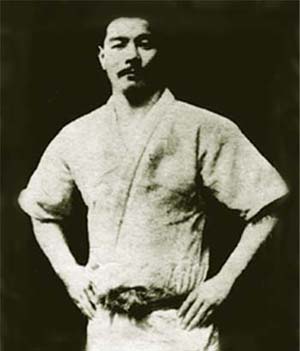Despite its current popularity, Brazillian Jiu Jitsu or BJJ is still a very young martial art.
Unlike most other traditional martial arts, almost every practitioner can trace their lineage back to the original founders of the art.
By following the line teachers, each practitioner or jiu jitero can travel back through time to the point when the art of BJJ as we know it was born, to a time when the Far East met the South American West.
Jiu Jitsu (also known in Japan as jujutsu) was taught to samurai and members of the military as a form of unarmed martial art.
It was the basis of almost all unarmed combat from karate to sumo.
Judo was one such off-shoot. Founded by Jigoro Kano, Judo specialized in the use of throws and grappling to subdue opponents.
The History of Brazilian Jiu Jitsu
Within the hallowed halls of his school, the Kodokan, Jigoro Kano requested that one of his top students, a Mitsuyo Maeda, spread the art of Judo to the world.
Traveling the globe and demonstrating the art and accepting challenges from fighters and martial artists, Maeda finally landed in Brazil in the middle of November 1914.
In 1916 Maeda performed at the American Circus in Belem, Brazil.
Little did anyone know but this performance would eventually lead to the birth of a new art that will eventually dominate the martial arts world.
As it turns out, a man by the name of Gastao Gracie was a business partner of the American Circus.
His eldest son, Carlos Gracie took a particular interest in Maeda’s fighting style after watching him perform in 1917 at the Da Paz Theatre.
Carlos wanted to learn Judo and Maeda accepted him as his student.
After years of tutelage, Carlos then went on to teach his brothers the art of Judo which included a much smaller (and some would say sickly) Helio Gracie.
Helio, due to his smaller and weaker build did not usually have the strength or power to utilize the big throws or smothering top ground game typically found in Judo.
Instead, Helio adapted the art and turned it into a predominantly ground-based fighting system, this way negating the mechanical leverage that a larger individual would have on a smaller opponent.
And so started what would become known as Gracie Jiu Jitsu, and later on simply Brazillian Jiu Jitsu.
As prevalent and instrumental as the Gracie family was to BJJ’s development, Maeda had other Brazillian students who then went on to form their own brand of equally powerful jiu jitsu.
The most predominant lineage would have to be that of Luiz Franca and that of his student Oswaldo Fadda.
Where Helio Gracie initially believed that jiu jitsu should only be taught to the upper class of society, Franca and Fadda believed that it is an art that should be shared with everyone especially the disenfranchised.
The two schools were heated rivals and competed often with Fadda’s schools and students becoming infamous for their use of footlocks.
Conclusion
Fast forward almost a hundred years later and thanks to Royce Gracie (Helio’s son) for demonstrating the power and efficacy of BJJ during his fights in the Ultimate Fighting Championship, BJJ has become the fastest growing and one of the most popular (if not the most popular) martial art in the world.
This rise in popularity has birthed many famous gyms, such as the world-renowned Phuket Grappling Academy.






























